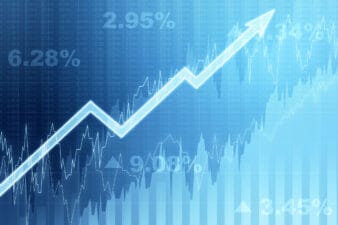Bombardier (TSX:BBD.B) stock price has been volatile enough over the past year to give shareholders whiplash. It started 2018 at $3.48, plunged all the way down to $1.58 by November, and has surged to $2.90 today. It’s now every trader’s sweetest dream and every investor’s worst nightmare.
The most recent upsurge was sparked by the company’s February announcement of a modest profit for the full year of 2018. The company hasn’t been in the black since 2014. While the razor thin profit margin (1.4%) isn’t much to gawk at, investors now hope the industrial giant can implement a turnaround strategy it’s been working on.
Could this recent profit indicate better days ahead? Is the valuation justified considering the risks? Let’s take a closer look.
Turnaround strategy
The company’s turnaround strategy can be summarized in one word: streamlining. It’s shedding the fat and focusing on the most profitable and promising parts of the business, which means getting rid of the troubled commercial aerospace business, cutting jobs across the board, and deploying resources to the rail and corporate jet operations.
Margins have improved for both these core operations, rising from 5.6% to 9.3% at the rail division and from 4.4% to 8.4% at the jet division since 2015. Meanwhile, the company expects to deliver 150 to 155 business aircraft this year, which should help management meet its target of $18 billion in revenue.
The turnaround phase is expected to last till 2020, thereby boosting consolidated revenue and margin by then. Cash generated from non-core asset sales and saved from employee costs will be used to reduce the $9.5 billion in debt the company carries.
Risks
The risks, of course, are the debt and cash burn. Bombardier doesn’t just need to turn the company around — it needs to do so before major debt payments come due over the next few years.
Meanwhile, a recession could derail the company’s global sales plans. It only takes a bit of Googling to figure out how many plane and rail orders were cancelled by governments across the world in the midst of the 2009 financial crisis. Any downturn in the global economy over the next few years could have a similar impact.
In short, Bombardier needs to offload non-core assets at attractive prices, meet its sales and cost-cutting targets, and avoid a global recession over the next few years to avoid a tragic end.
Even if the stars align and the company survives 2020, it’ll still be a high-cost, low profit, cyclical company in an intensely competitive industry.
Valuation
Despite the monumental risks, Bombardier still trades like a regular industrial company. The company’s trailing price-to-earnings (PE) ratio (32) is higher than both Airbus (29) and Boeing (24.7). Bear in mind that these two rivals offer dividends and don’t face the same debt crisis as Bombardier.
Bottom line
Even if Bombardier can pull off its tricky turnaround plan, investors are simply not being compensated for the immense risks and hurdles the company faces in the near-term. A sudden spike in interest rates, recession, or missed targets on cost-savings could deteriorate the company’s prospects, while the turnaround plan seems like it’s too little, too late.
I would stay away, but I can see why speculators would find these circumstances attractive.







